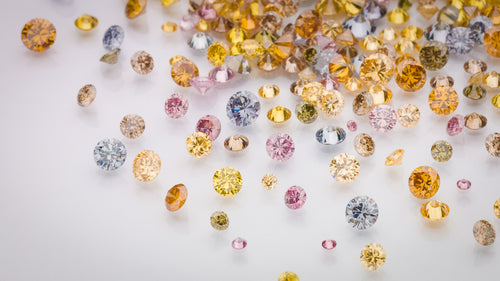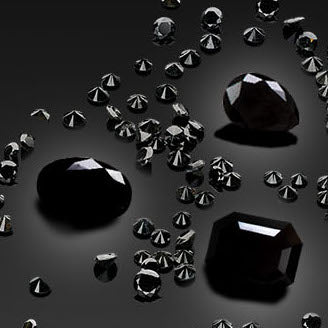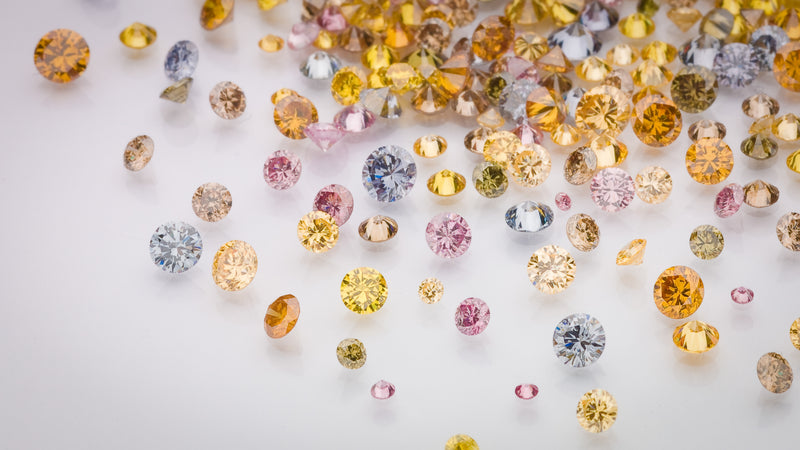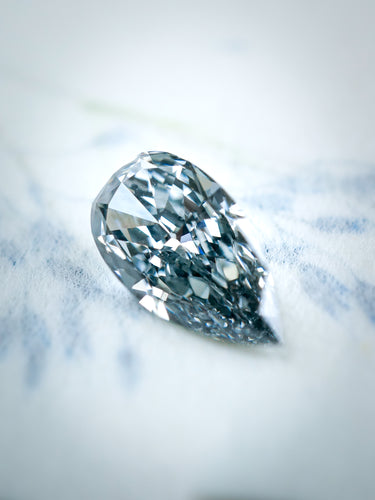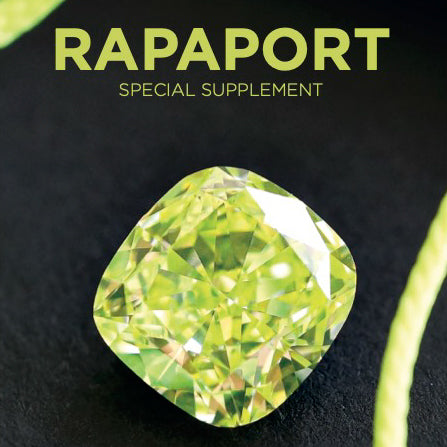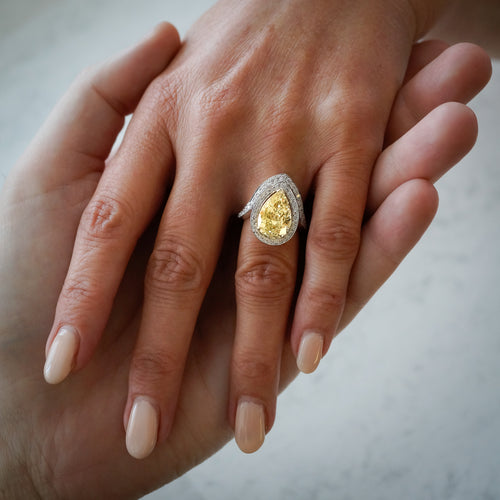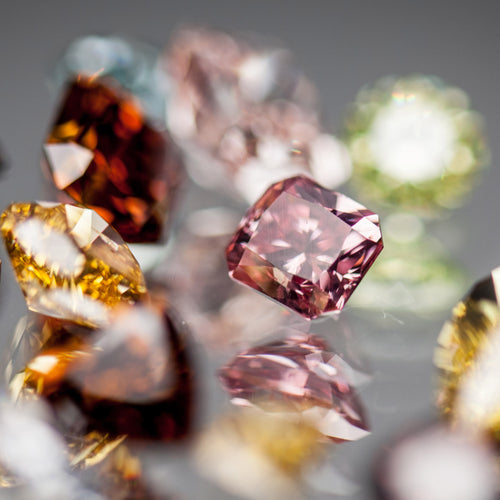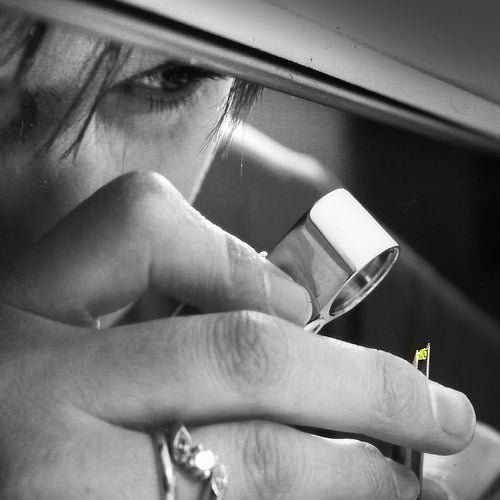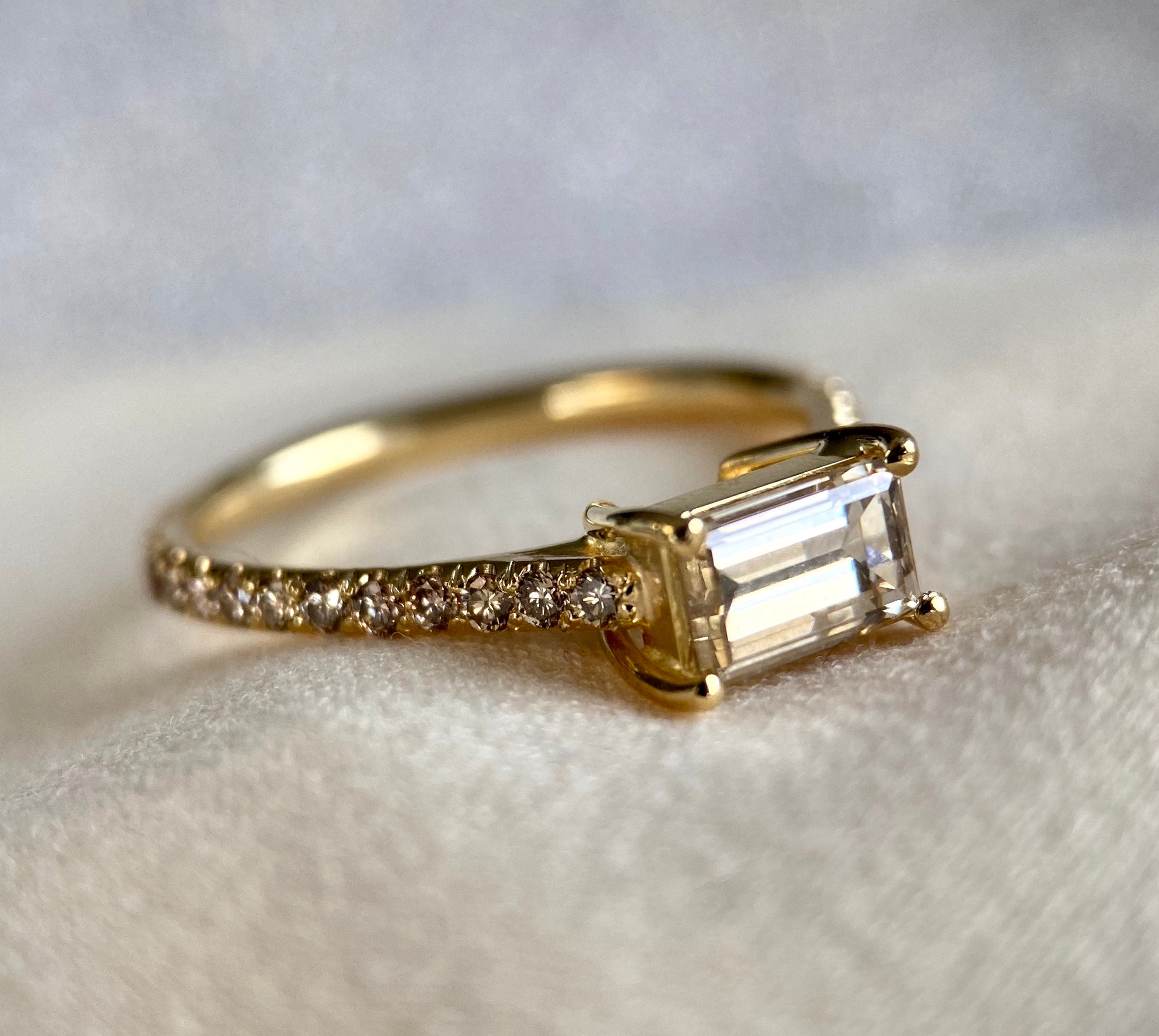


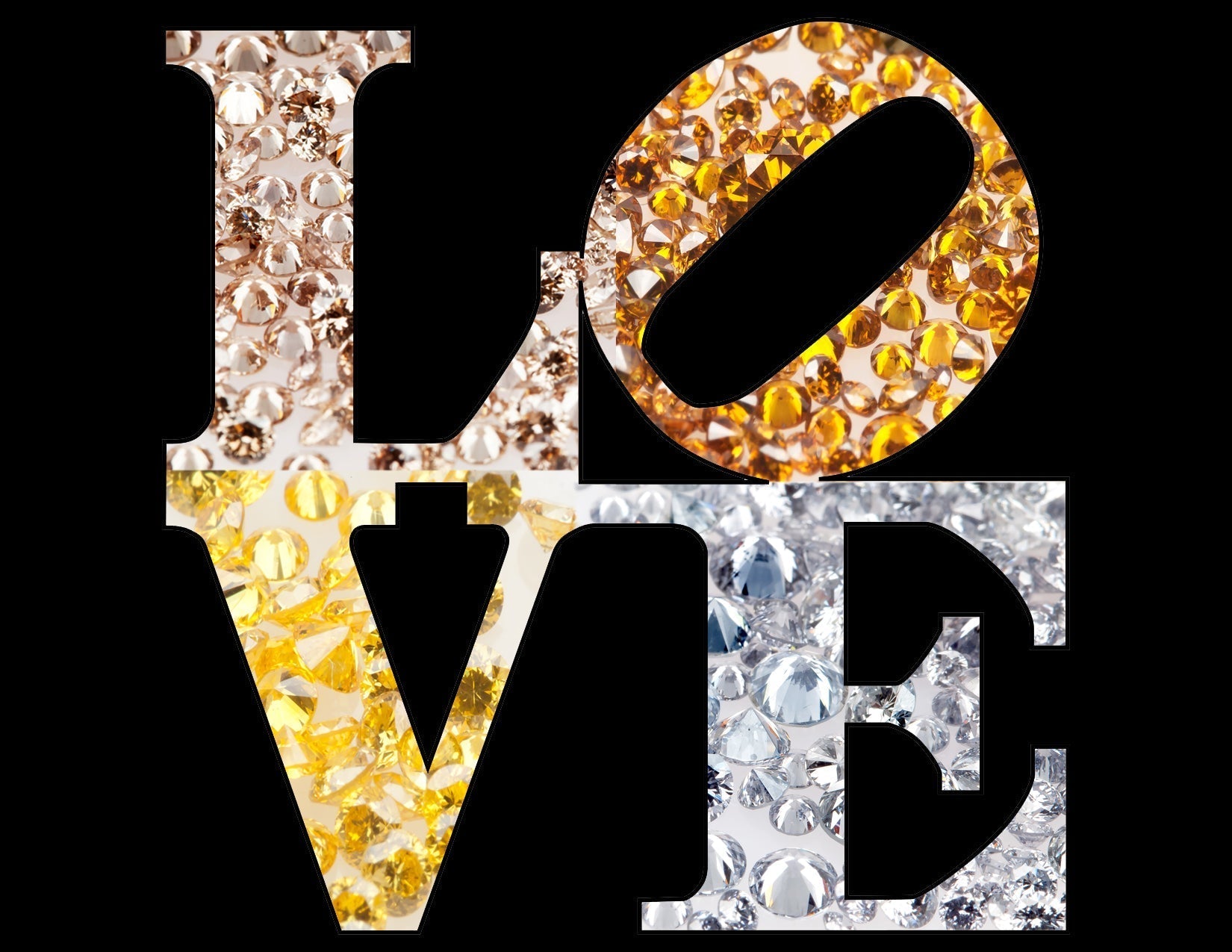
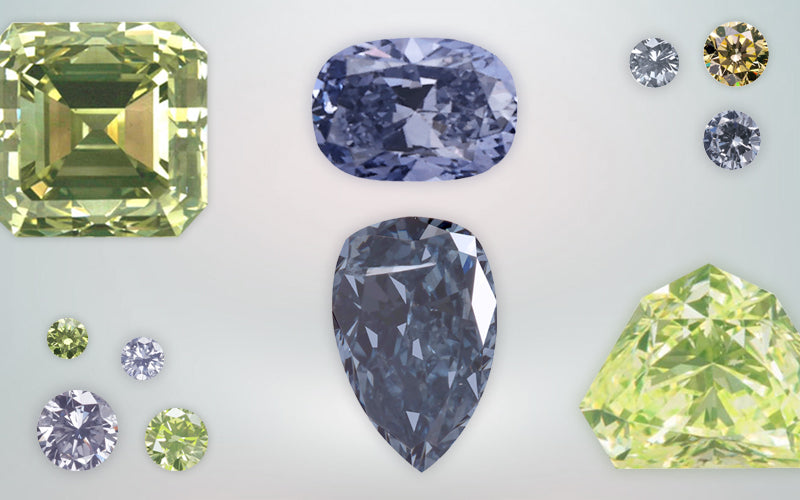

Clarity and Color
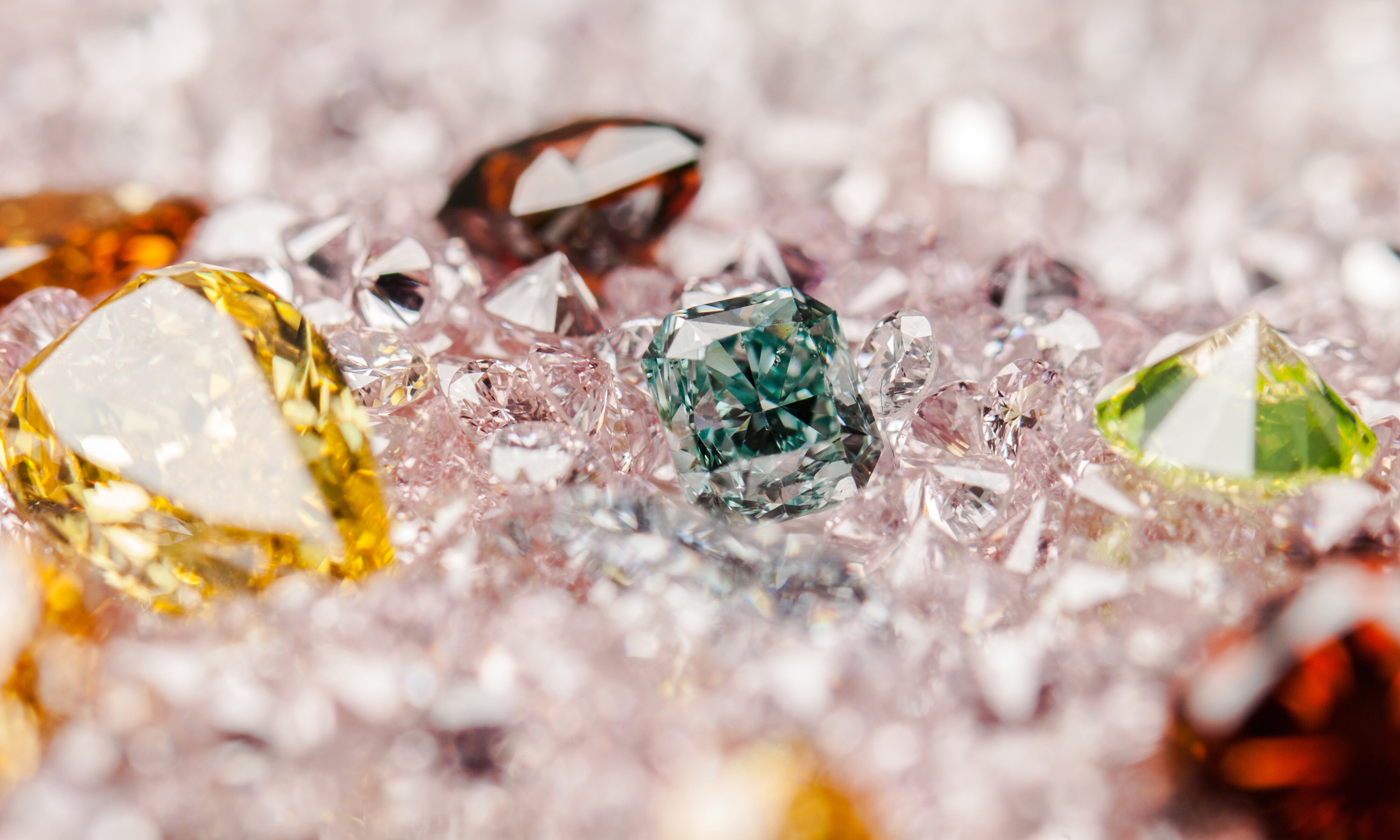
Difference between color diamonds and white diamonds
Clarity and color are criteria that you need to take into consideration when choosing a diamond, but they play different roles for white diamonds and for color diamonds. For white diamonds clarity is considered an important factor, and it remains a prominent part of the 4C’s, that are used to evaluate the quality of a diamond. For natural color diamonds however, the criteria are more complex and just like for many other aspects, they must not be confused with the standards used for grading white diamonds.
As a general rule one can say that if the inclusions do not disturb the beauty or color of the diamond – then they are not considered to be important. A more nuanced explanation is that each color has its own type of imperfections, and thus its own guidelines for whether these are important or not. It will also to some extent depend on the purpose of your purchase.
Every color has its imperfections
Some examples of colors where it is more common to find good clarities is yellow, brown and blue diamonds, and for these colors a buyer can therefore expect to find a larger choice of diamonds with good clarity. Amber and cognac diamonds on the other hand often have clouds in the heart of the stone, and this is also regularly seen in gray diamonds. Pink, purple and red diamonds are rarely found with perfect clarity, and the reason for this could be the same theory that explains their color, which is thought to originate in the extreme pressure that these diamonds were exposed to while rising through the earth. This pressure might hence have created both their stunning color and the inclusions that are often found in these diamonds.
There are thus some geological explanations to certain imperfections found in natural color diamonds, which is good to know when buying a colored diamond. For diamonds that are often found with good clarity, such as yellow and brown, the clarity of the diamond will consequently have more of an impact on the price than for a color where imperfections are seen more frequently, such as purple or pink.
Rarity also has an impact
To this equation we have to add the rarity of the color, which will also have an effect on the importance that is granted to the clarity of the diamond. If a color is very rarely found, then we’ll cherish the few specimens that exist, and clarity will be considered much less important. A good example here is the Hancock Red Diamond, a 0.95 carat purplish red diamond that was sold at Christie’s for a record-breaking $926,000 per carat in 1987. It was graded I for clarity, and despite this it held the record for price per carat at auction longer than any other natural color diamond so far. It is also the one diamond that brought natural color diamonds back in the spotlight, and since that interest has only been growing. The conclusion is thus that for rare colors, the tolerance for inclusions is higher.
Color and situation of the inclusion
Just like for white diamonds the situation of the inclusion in the diamond, as well as the color of the inclusion, will also play a role. A well-situated, white inclusion can for example be acceptable in a yellow diamond, whereas a black inclusion under the table in the same diamond will sometimes affect the beauty of the stone, and hence be considered as a negative factor. A white inclusion in another color such as brown or olive might on the other hand be more visible than a black inclusion, and thus have more of an impact on the beauty of the diamond, and consequently on its price. It is also important to remember that a diamond can be graded I, and thus have inclusions that are visible to the naked eye, however if these are situated on the pavilion side or tucked in under the crown, it may not have any impact on the appearance of the diamond or on its color.
Conclusion
The abovementioned factors are important to be aware of when buying a natural color diamond. For certain colors one has to be more tolerant with inclusions than for others, as it simply might not be possible to find an option with better clarity. In the end, it is also a question of what you are looking for in your diamond – sometimes it might be worth accepting a lesser clarity to get a larger diamond or a better color within your budget range, if you are looking to buy a beautiful diamond for a jewel, for example, or if you are a collector searching for that special color lacking in your collection. On the contrary if you are looking for an investment diamond, it could be wiser to choose the best clarity possible for the color and budget range you have selected. We are of course here to advise you on these questions, if you choose to buy your natural color diamond from Langerman Diamonds. Contact us for more information!
